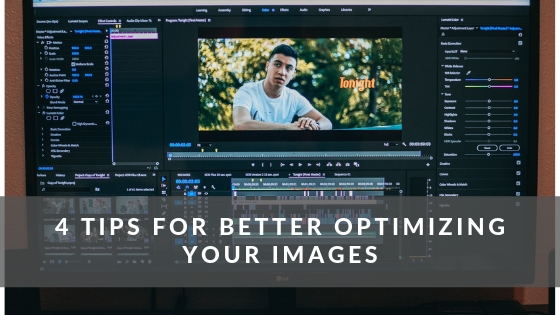There are many reasons you should be optimizing each image you use on your site. From helping each web page to load faster to ensure your pictures come up in image searches, optimizing image files provides a host of benefits. Fortunately, if you follow these suggestions, you don’t need an expert to optimize the files for you.
Rename every image
Whether you take the picture yourself or get permission to use another’s image, it’s always important to rename the file. In many cases, the original file name may simply be a random series of numbers, but by renaming the file with descriptive keywords, you’ll be helping search engines rank your site more accurately. Yes, search engine crawlers do look at image file names.
Fill out the alt attributes
When you save a file in photo editing program, or upload it to your site, you’ll have the option of filling out the alt text. Most people ignore this option and leave the fields blank without realizing that they’re making a big mistake. The alt text is visible when someone hovers over your photo, so you can use these fields to provide more information about your product. Additionally, adding information will give crawlers something more to consider, which can help your search engine rankings. Alt attributes also help Google images determine when to show your images in search results, which can help people find pictures of your brand’s products.
Less is more
While you may be tempted to upload large images of your products, keep in mind that larger images will take longer for the page to load. This is important to consider, because users don’t like waiting for a web page to load. Even 15 seconds is too long and can cost you customers. Additionally, Google recognizes user preferences and, for that reason, they rank slower loading sites lower in search results. Instead, the page should load with a smaller image, but you can set up an option to enlarge the image.
Choose the right file type
In terms of image files, there are three main types of files, but the JPEG file type is still the standard in most cases. It enables you to upload quality images without bloating the file size. Editing the size is also easier with this file type. GIF images are typically reserved for smaller, low quality images and animations. They also cannot be easily modified, which is another reason they’re undesirable for commercial sites. If you absolutely cannot use a JPEG image for some reason, the best alternative is the PNG image. This file can provide high quality images with very small file sizes, which means your site will load faster without compromising quality.
You can learn more ways to optimize your images by doing a little online research, but these tips will give you a good start. How you use images on your website will affect your ability to make your page visible. It can also affect the user experience, which is essential to your website’s overall performance.
